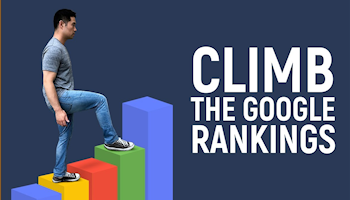Why a Digital First Approach Is Essential

Author - Clodagh O'Brien
If your audience spends time in any of these digital spaces, then it’s crucial to have a presence there. Otherwise, your just making way for the competition.
One of the most crucial tools for building a digital brand is content, which includes things like webpages, blogs, emails, social posts, videos, and more. It’s not possible to have a digital presence without content, and the type of content you create and curate will tell your audience everything they need to know about your brand, including who you are, what you stand for, and how you can solve their problems.
For instance, let’s look at an example of a company who has done a great job of creating a digital brand— Airbnb. For one thing, they're everywhere their potential customers are: they have Facebook, Twitter, and other social profiles, a great website, a YouTube channel with nearly 100,000 subscribers, they developed an app, and the list goes on. Beyond that, however, they’ve also successfully created a brand image of themselves as a company that puts complete emphasis on the customer.
To feed into a storytelling element their website has an entire section dedicated to Community Stories, where hosts from around the world share their tales, photos, and videos about how they got involved with Airbnb. Not only does this convey the brand image of them caring about their customers, but it also helps to allay fears of wary prospects who might not feel comfortable renting a room in a stranger’s home, and this creates trust and builds relationships.
Digital Allows for Targeted Campaigns
Aside from being present where your prospects are, another reason it’s important to focus on digital-first is because digital prioritizes targeted marketing in a way that traditional marketing doesn’t.
For example, before digital was the primary channel for communication between brands and their audiences, some businesses used to send out physical newsletters to their clients and prospects. One problem, however, was that all the newsletters were the same, regardless of whether they were sent to a 90-year-old grandmother or a 19-year-old college student.
By contrast, a company today can segment their email list and create 100 different versions of the same marketing email in order to personalize content, offers, wording, images, and more based on factors like demographics, buyer’s journey stage, purchasing history, etc.
Targeted emails are far more effective because today’s consumers expect brands to personalize marketing messages. When you approach your marketing and brand from a digital perspective, it puts the focus on targeted messages.
Another benefit of adopting a digital-first approach to branding is that it makes you more flexible, which is integral in a world where technology and consumer behavior change at a dizzying pace.
Take a look at how mobile search impacted digital marketing, for example. There was a time not long ago when digital marketers didn’t have to worry about how websites looked on mobile devices, because people simply didn’t use these devices for search.
Today, however, nearly 60% of web searches are done from smartphones and tablets, and brands have had to change the way they design and develop their online real estate as a result. If you don’t have a website that’s responsive, then your customers will bounce as soon as they land there from a mobile device, and your website plays a huge role in your brand identity. When you approach your brand’s presence from a digital-first strategy, you get used to the rate of change, and this makes you more adaptable, flexible, and able to change as new technologies and patterns emerge.
Branding has been a crucial part of marketing since at least the 1950s, but the art has changed a great deal since those early Mad Men days. Today’s consumers spend their time with different media and on different channels than in the past, and companies must respond by following their audiences to these new platforms. In order to remain visible and relevant in a connected world where people spend more than half their days interacting with digital devices, brands must adopt a digital-first approach to building and managing their modern identities.
Along with helping you connect with customers on their level, digital-first branding will also help you provide a better customer experience, facilitate meaningful interactions, ensure your marketing messages are highly targeted and help you stay flexible in an ever-changing digital world.
6 Simple Tips to Get More Search Results for Your Website

In this video, Entrepreneur Network partner Eric Siu offers a few tips on how to make your website rank on Google. Focus on both the design aspect of your site and the power of your company's brand. Some of the tips include: Brand reputation. Develop more recognition around your brand to designate yourself as the default. Aim to rank in the top search results. [Read]

